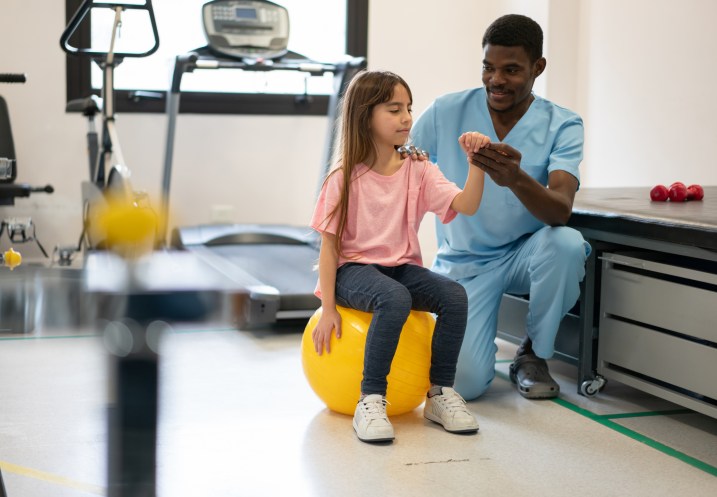
In this Q&A, author Joseph Schreiber shares the changes seen in physical therapy for children over the years, and how their new edition and accompanying book club make it easier for academics to support knowledge in action, helping participants apply the information in the book to their clinical practice and clinical decision-making.
What changes have you seen in physical therapy for children over the years?
There are many changes – of course, we are aware of the scientific evidence and how this should be applied to clinical practice. I’m not sure that was emphasized as much early in my career. The evidence that continues to emerge and evolve has most recently moved us to think about ensuring that our interventions are at the necessary dosage and intensity to optimize effectiveness. Those interventions also almost always need to encourage active movement on the part of the child. The interventions also must address and integrate the goals of the child and family and should lead to optimal participation for the child. In order for all that to happen, pediatric physical therapists are charged with continually collaborating with families and children – I believe this is in contrast to the approach that existed when I started my clinical practice, which was much more of an expert-driven top-down approach with the health care provider in charge and running the show.
What has changed in this 6th Edition of Campbell’s Physical Therapy for Children?
Of course, in all chapters the information has been updated to reflect the latest evidence. In addition, in several chapters new author groups have brought their perspective to the content. Also, there are two new chapters including Chapter 21 on Down Syndrome and Chapter 2, which focuses on Social Determinants of Health and Pediatric Health Care. As editors we encouraged all author groups to consider and integrate this content area, and this is a substantial and very meaningful difference in this edition compared to previous editions. Lastly cases and videos have been upgraded and continue to provide a phenomenal resource for readers.
Can you give us a quick overview of Campbell’s Physical Therapy for Children, 6e continuing educational course?
The focus of the courses will be on supporting knowledge to action- helping participants apply the information in the book to their clinical practice and clinical decision-making. Therefore, in addition to providing chapter-related content, the courses will include a variety of activities that support this translation into clinical practice. These include activities like multiple course sessions, scheduled through collaboration between the instructors and the attendees; pre-session worksheets that guide reading and encourage individuals to consider relevance of the content to their own clinical practice; case-based learning activities during course sessions that are both “top-down” (i.e. cases provided by the course instructor(s)) and “bottom-up” (i.e. cases provided by course attendees); active learning during course sessions that engages and results from the collective wisdom of the instructor(s) and the attendees; opportunities during sessions within a course that allow for reinforcement of key learning points and reflection for attendees; and optimizing awareness and use of all of the resources associated with the book.
The book club you have organized: Knowledge-to-Action: Campbell’s Physical Therapy for Children- 6th Edition. What do you hope academic teachers will gain from attending your book club?
I have a couple book club ideas in mind. One is for clinicians – each month we will take one chapter and focus on that content area. Participants will complete a brief worksheet and then join in for a related one-hour discussion each month on that chapter. The chapters we focus on will be a collective decision of the group and their participation each month – completing the worksheet and attending the discussion, will lead to two CEUs. At the end of the 12-month book club the total number of CEUs for each participant will be awarded.
What will be the structure of your monthly book club sessions?
The book club for academic teachers will have a similar structure, but the emphasis of the worksheets and the monthly one-hour discussions will be on how best to teach this content to entry level students, and how to optimize the use of the resources available in the ebooks to facilitate student learning.
For both book clubs, the discussions will be application based and will benefit greatly from the collective wisdom of the participants. I also hope that chapter authors can join in for their respective chapter discussions as well.
Do you offer Continuing Educational Credits for academic teachers who attend your book club sessions?
The last thing is that ideally there will be some “spin-off” continuing education courses where there is an opportunity to delve into a content area in much more depth. These will result from collaborative discussions with book club participants.